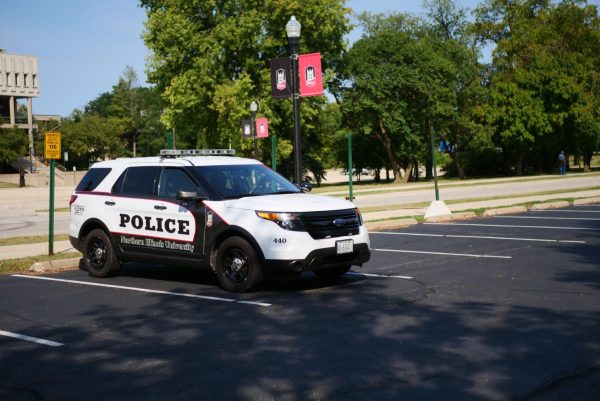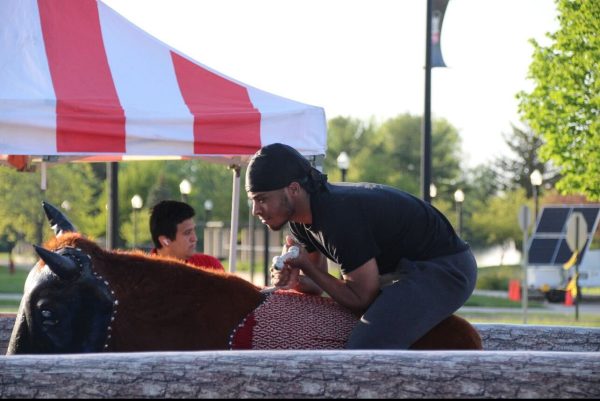Lab helps group build 6-legged machine
November 19, 2014
Students in a mechanism design and analysis class are creating a six-legged walking mechanism machine using 3-D printing.
John Seper, senior mechanical engineering major, said teams of students spent at least two months completing their machine’s design. Seper’s team then contacted EIGERlab, which will complete the 3-D printed mechanism Friday or Monday.
The assignment is due the Tuesday after Thanksgiving break and the six groups of four to five students will compete for grades on their robots.
Creating the design
Seger said the group members started with a brainstorming session and then started to create the machine’s leg in a design program on the computer. They were only provided with one motor, battery cases and an on and off switch.
“Initially we had one of our group members who had a pizza box that he cut up and made legs out of just to have something to look at,” Seper said.
Haley Cummings, a junior mechanical engineering major in the group, said the students were given design constraints by the professor. The robot has to have six legs, use what’s called a Hoeckens linkage to walk and have three feet on the ground at all times, Cummings said. The Hoeckens linkage makes the legs of the robot walk along a path guided by the front leg.
Getting it built
The group was also given plastic and access to laser-cutting technology provided by the College of Engineering, but Cummings said creating the robot with plastic would have proven too bulky given the movements necessary for their design.
“We realized that we were going to be able to 3-D print it through EIGERlab, which was going to greatly increase the efficiency of the design,” Cummings said.
Mike Cobert, assistant director for EIGERlab, said EIGERlab helps companies and individuals with product development.
“It will be printed as an assembly so it’ll be a fully functional model when we print it no assembly necessary,” Cobert said.
Seper said that although collision detection was run in computer software to ensure the mechanism functions properly, it’s impossible to tell for sure until the product is finished.
“We have maybe two or three hours of assembly once we get it back just as far as putting the motor in and the battery compartments and just making sure everything works,” Seper said. “That’s the biggest fingers crossed.”
Learning experience
Seper said he’s found the project to be beneficial to his mechanical engineering learning experience.
“It’s the process of doing it,” Seper said. “One thing is learning the time it takes and the details. Everything has to be lined up, you have to have proper clearances. Just being exposed to things you weren’t aware of. And it’s also I think learning to work in the time constraint.”
Cummings said after the class mechanical engineering professor Behrooz Fallahi keeps all the robots and uses the designs created with the robotics team at NIU.
“The robot is kind of the design component of the class,” Cummings said. “I think it’ll definitely be good [for] a resume to say we designed and then printed a robot for our class.”













